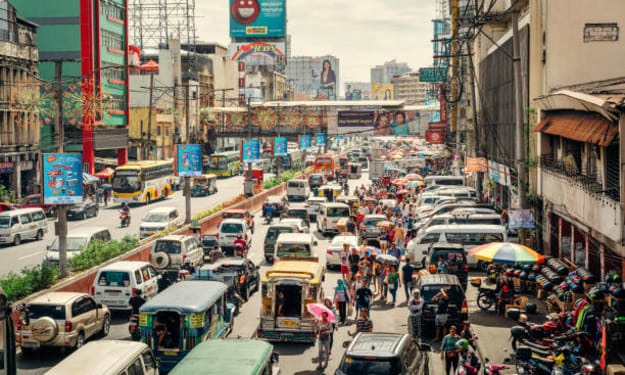The Most Dangerous Animals in the World
The Apex Predators: Unveiling Nature's Most Formidable Beasts
In the intricate tapestry of the natural world, certain creatures stand out not only for their beauty and grace but also for their formidable power and deadly capabilities. From the depths of the oceans to the densest jungles and the vast expanses of savannas, the animal kingdom is populated by creatures that command respect and evoke fear in equal measure. In this exploration, we delve into the world of the most dangerous animals, uncovering the untamed ferocity and lethal potential that define these apex predators.
1. Nile Crocodile (Crocodylus niloticus)
With its armored body, razor-sharp teeth, and powerful jaws capable of exerting crushing force, the Nile crocodile reigns supreme as one of the most dangerous animals on Earth. Found in the freshwater rivers, lakes, and marshes of sub-Saharan Africa, this apex predator is responsible for countless human fatalities each year. Ambushing its prey with stealth and precision, the Nile crocodile strikes fear into the hearts of both humans and animals alike.
2. Saltwater Crocodile (Crocodylus porosus)
The saltwater crocodile, also known as the "salty" or "salties," is the largest living reptile and a true embodiment of prehistoric power. Found throughout the Indo-Pacific region, from India to northern Australia, these formidable predators are known for their aggressive behavior and territorial nature. Capable of launching themselves out of the water with astonishing speed and ferocity, saltwater crocodiles pose a significant threat to any creature that dares to enter their domain.
3. African Elephant (Loxodonta africana)
Despite their seemingly gentle demeanor, African elephants are among the most dangerous animals in the world, particularly when provoked or threatened. With their massive size, immense strength, and lethal tusks, these majestic creatures are capable of inflicting serious harm on both humans and other animals. Encounters with aggressive elephants, particularly lone bulls or females protecting their young, have resulted in numerous fatalities and injuries.
4. Mosquito (Family Culicidae)
While small in size, the mosquito wields deadly power as one of the deadliest animals on the planet. As carriers of deadly diseases such as malaria, dengue fever, Zika virus, and West Nile virus, mosquitoes are responsible for millions of human deaths each year. Their ability to transmit pathogens through their bites makes them a formidable foe and a constant threat to public health, particularly in regions where these diseases are endemic.
5. Box Jellyfish (Class Cubozoa)
Found in the waters of the Indo-Pacific region, the box jellyfish is widely regarded as one of the most venomous creatures in the world. With its transparent bell and long, trailing tentacles armed with potent toxins, this elusive predator is capable of delivering a sting that can cause excruciating pain, paralysis, and, in some cases, death. Encounters with box jellyfish pose a significant risk to swimmers and beachgoers, particularly during the warmer months when they are most active.
6. Cape Buffalo (Syncerus caffer)
Known for its unpredictable behavior and aggressive temperament, the Cape buffalo is considered one of the most dangerous animals to encounter on foot in Africa. With its massive horns, sturdy build, and formidable strength, this bovine behemoth is capable of delivering devastating charges and inflicting serious injuries on predators and humans alike. Responsible for numerous fatalities among hunters and wildlife enthusiasts, the Cape buffalo commands respect and caution at all times.
7. Great White Shark (Carcharodon carcharias)
As the apex predator of the ocean, the great white shark instills fear and fascination in equal measure. With its sleek, torpedo-shaped body, rows of razor-sharp teeth, and unmatched hunting prowess, this formidable predator reigns supreme at the top of the marine food chain. Known for its powerful bite and ferocious attacks on seals, sea lions, and occasionally humans, encounters with great white sharks evoke both awe and trepidation among ocean enthusiasts.
8. Black Mamba (Dendroaspis polylepis)
As one of the fastest and deadliest snakes in the world, the black mamba commands respect and fear in equal measure. Found in the savannas and rocky hills of sub-Saharan Africa, this highly venomous serpent is capable of delivering a series of rapid, accurate strikes that can result in rapid paralysis and death. Known for its aggressive behavior and potent neurotoxic venom, encounters with black mambas are a harrowing experience for both humans and animals alike.
9. Polar Bear (Ursus maritimus)
As the largest land carnivore on Earth, the polar bear is a formidable predator of the Arctic ice pack. With its massive size, powerful jaws, and keen hunting instincts, this apex predator is capable of taking down prey many times its size, including seals, walruses, and even beluga whales. Encounters with polar bears pose a significant risk to humans, particularly in regions where sea ice loss has forced these iconic predators to search for food on land.
10. Poison Dart Frog (Family Dendrobatidae)
Despite its diminutive size, the poison dart frog possesses deadly venom that serves as a potent defense mechanism against predators. Found in the rainforests of Central and South America, these brightly colored amphibians secrete toxins through their skin that can cause paralysis, convulsions, and even death in predators and humans. Encounters with poison dart frogs serve as a stark reminder of the deadly beauty and lethal potential that lurks within the natural world.
The world is a dangerous place, populated by creatures that command respect and evoke fear with their formidable power and deadly capabilities. From the ferocious jaws of crocodiles and sharks to the potent venom of snakes and frogs, encounters with nature's deadliest predators serve as a stark reminder of the untamed ferocity and primal instincts that define the animal kingdom. As we navigate the wilds of the natural world, it is essential to approach these apex predators with caution, respect, and a deep appreciation for the awe-inspiring beauty and deadly potential that they possess.
About the Creator
Ibok Gerard
Ibok Gerard is a wordsmith, dreamer, and adventurer. His writing explores the intersection of mystery and reality
Enjoyed the story? Support the Creator.
Subscribe for free to receive all their stories in your feed. You could also pledge your support or give them a one-off tip, letting them know you appreciate their work.







Comments
There are no comments for this story
Be the first to respond and start the conversation.